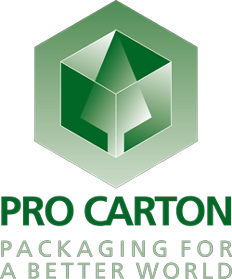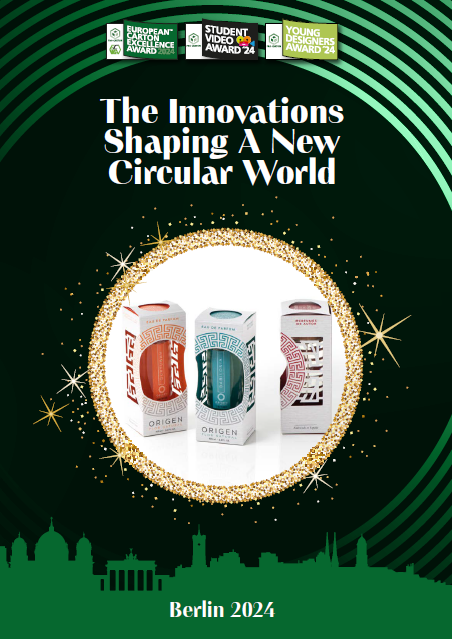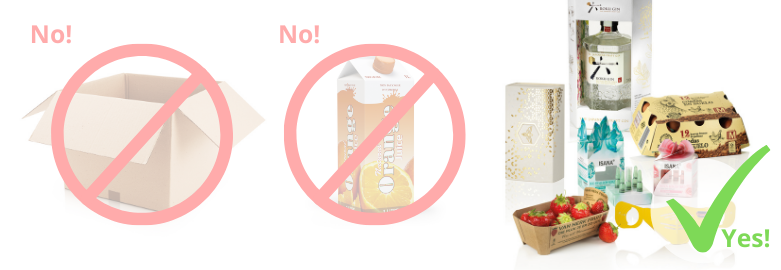What are Cartons and Cartonboard?
Folding cartons are small to medium-sized boxes made of cartonboard. They are used to package a wide range of products, from food – such as cereals, frozen and chilled foods, confectionery, baked goods, tea, coffee and other dry foods – to pharmaceuticals, cosmetics and more.
Many different types of cartonboard are produced, all of which can be manufactured in different weights (grammages) and thicknesses. The type of cartonboard and fibre composition depend on the intended use and the specific requirements. Cartonboard is made up of several plies to make the best possible use of the different types of raw materials and optimise product performance. See Why Cartons? for more detail on cartonboard.
Cartonboard is made from wood chippings (from trees) or from recycled paper and board. The wood raw material comes from sustainably managed forests. Not only are they a renewable resource, but in Europe more trees are grown than are harvested. European forests are grown and harvested in a carefully controlled and sustainable way – so successfully that European forests, where most of the raw material comes from, have grown by an area the size of Switzerland in just 10 years! Trees play an essential role in reducing climate change as they absorb carbon dioxide and release oxygen.
Cartonboard is renewable, recyclable and biodegradable. It is a truly sustainable packaging material and a perfect example of the circular economy.
It is also extremely flexible and versatile. It can be folded and creased into many different shapes and its print and special effects capabilities are almost infinite, from embossing and gold foiling through to 3D holographic effects.
Please see some examples of the cartons, all of which have recently won at the 2024 Awards Night:
Please note that this competition only includes printed folding cartons. Corrugated cardboard and beverage cartons (Tetra Pak packages) are excluded.
Cartons and Cartonboard
More than ever, packaging is needed to protect products and the environment, but also to sell the packaged products. A product is always accompanied by its packaging, regardless of where it is sold – on the shelf or online; packaging is the only “companion” that can support the product anytime, anywhere.
No form of packaging is more communicative and informative than the folding carton. Folding cartons have a high-quality image, offer a strong impact on the shelf and are highly regarded by consumers. Research confirms that folding cartons are trusted and preferred over other forms of packaging.
With their high-quality print and wide range of special effects, folding cartons convey an image of quality at the point of sale. This is crucial to the success of a product. Adding texture or ‘feel’ to a folding carton can give it an additional emotional appeal to the consumer. Design can include tamper-evident, child-resistant or other security benefits through tamper-evident marks, creative design and printing / ink system technologies. Did you know that packaging protects ten times more resources than it consumes and accounts for only 3-5 % of environmental impact compared to food production?
Improvements in cartonboard technology have led to significant reductions in the weight of board needed to produce folding cartons. Over the last 20 years, the weight of folding cartons for the same products has come down by approximately 40%. Raw materials are readily and consistently available – and totally sustainable.
Additionally, at the end of life, folding cartons are collected and recycled and form an important secondary raw material. Research has shown that we can recycle paper fibres more than 25 times and around 83% of paper and cartonboard packaging is recycled across Europe (2023), much more than other materials. Today about 50% of folding cartons in Europe are made from recycled fibre and 50% from virgin fibre. Both are equally important in achieving a fully functioning circular economy.
Cartonboard is ideal for composting because cellulose fibre is biodegradable. This means that it can be broken down into natural substances by bacteria using microbial enzymes, thereby producing carbon dioxide, water and compost (humus).
Cartonboard is natural, renewable, recyclable and, should it accidentally find its way into nature, biodegradable. It is a truly sustainable packaging material: Packaging for a better world.





